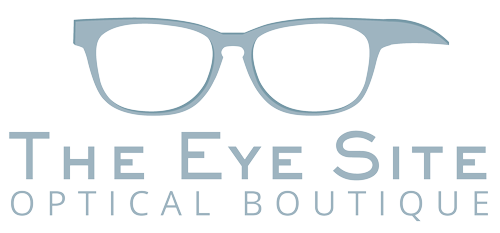Understanding Myopia in Kids
In our last blog, we talked about Myopia, or nearsightedness, a vision condition where distant objects appear blurry while close objects can be seen clearly. This condition is quickly growing in children. Myopia develops when the eye grows too long from front to back, causing light to focus in front of the retina instead of directly on it. This growth pattern not only leads to the need for stronger prescription lenses over time but also increases the risk of serious eye conditions later in life, such as glaucoma, cataracts, retinal detachment, and macular degeneration. But we have several ways to treat Myopia in children at The Eye Site. Let’s talk about the first option: Orthokeratology (Ortho-K).
What Is Orthokeratology (Ortho-K)?
Ortho-K, or orthokeratology, is a non-surgical treatment that uses specially designed gas-permeable contact lenses that your child would wear overnight. These lenses gently reshape the cornea (the clear front surface of the eye) while your child sleeps. The reshaping corrects the refractive error that causes Myopia, allowing for clear vision during the day without the need for glasses or daytime contact lenses.
- How It Works: Ortho-K lenses apply gentle hydraulic pressure to the cornea, temporarily altering its shape. This change is reversible, so the lenses must be worn regularly (usually nightly) to maintain the effect.
- Myopia Control: The altered corneal shape changes how light focuses on the retina, particularly at the periphery, which reduces the biological triggers for the eye to continue to elongate—the main cause of Myopia progression.
Benefits of Ortho-K for Kids
1. Slows Myopia Progression
- Ortho-K has been shown in multiple studies to slow the progression of Myopia in children by about 40–50% compared to standard glasses or soft contact lenses.
- This means children are less likely to develop High Myopia over time, which is associated with greater risks to long-term eye health.
2. Daytime Freedom from Glasses or Contacts and Improved Quality of Life
- Children enjoy clear, natural vision throughout the day without the need for glasses or contact lenses, which is especially beneficial for sports and active lifestyles. No need to worry about broken or lost glasses, or managing daytime contact lenses while kids are active and busy. This also means that children may feel more confident and unrestricted, especially if they dislike wearing glasses or are self-conscious about their appearance.
3. Noninvasive and Reversible
- Ortho-K is a non-surgical, reversible treatment. If discontinued, the cornea gradually returns to its original shape, and vision reverts to its previous state.
4. Safety
- Ortho-K is considered safe for children, provided that proper lens care and hygiene are maintained. Most adverse effects are minor and manageable.
Who Is Ortho-K Best For?
Ortho-K is most effective for children with mild to moderate myopia and is ideally started between ages 6 and 12, when myopia progression tends to be fastest.
Suitability depends on the child’s eye health and the degree of myopia, so we will do an exam with your child to determine whether Ortho-K is the best option for their individual eye condition (don’t worry, there are several options to try if Ortho-K isn’t right for your kid).
Ortho-K vs. Traditional Myopia Correction with Glasses/Contacts
Feature
Ortho-K Lenses
Glasses/Daytime Contacts
Vision Correction
Overnight, clear vision all day
Worn during the day
Myopia Progression
Slows progression by ~40-50%
Does not slow progression
Activity Freedom
No glasses/contacts during day
Glasses/contacts needed all day
Invasiveness
Noninvasive, reversible
Noninvasive
Suitability
Mild to Moderate Myopia,
best for kids
All Myopia levels
Risks
Minor if care is proper
Low
Ortho-K offers a dual benefit for children with Myopia: it provides clear, glasses-free vision during the day and significantly slows the progression of Myopia, helping to protect long-term eye health. It is a safe, effective, and convenient option when prescribed and monitored by an experienced eye care professional like Dr. Kristina. Call us, send us an email, or shoot us a text to set up an appointment for your child to find out if this is the right treatment program for their vision. We’ll see you soon!

